The history of one automation project, or how to implement a mixed accounting of fixed assets with a single tool
A customer contacted our company and faced the task of inventorying the OS. It would seem that it could be simpler: we take any mobile device on Android, fill in the DataMobile Invent software there, cling to “1C: Accounting 3.0” and voila, the problem is solved! But, as it usually happens, the request “we just need to count and unload into the register” pulled out other nuances of the inventory to the surface. We will tell you more about how it was in this article.
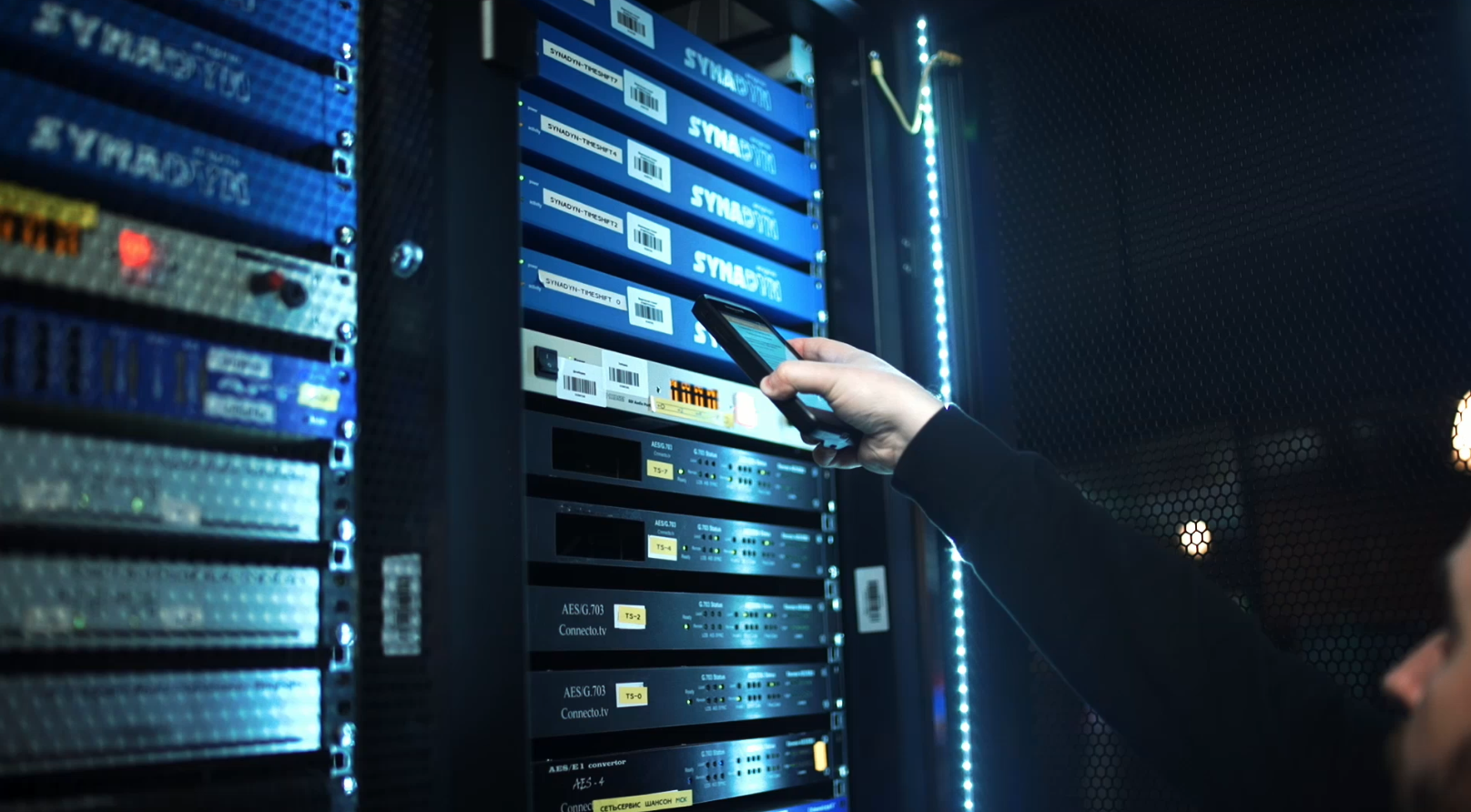
You may or may not love Chanson Radio, a matter of taste. But for us this is now not just a radio, but a successfully implemented project for the inventory of fixed assets.
A radio station is not a desk with a microphone, but a full-fledged working office of the organization with a mass of fixed assets on the balance sheet, including furniture, expensive equipment, and a whole bunch of stuff. The company’s accounting department was desperate to receive accounting data accurately and on time, because there’s already about a thousand units running around “stuff” in the office, try to count and figure out what is on paper. <

The inventory was carried out for several days, and then partially. Sometimes they started, but never finished (the guys are creative, without a muse). In a word, musical bookkeeping is tired of living like this and posed the question of automation edge-on.

And in general, there was no TK. There was a task to automate OS accounting, the guys got in touch with us, looked at the description of our software products on the data-mobile.ru website , phoned, talked. A couple of letters was enough to understand that our DataMobile Invent product was suitable for them, and we won’t invent a bicycle.
The standard functionality of DataMobile OS Inventory is:
• Carrying out an inventory of fixed assets
• Adding a photograph of the OS
• Record the marriage, indicating the reason
• Assigning a financially responsible person (MOT) and premises / storage locations
• Viewing the plan-fact of the inventory in real time, with the designation color of active positions
• Creating and sending print labels
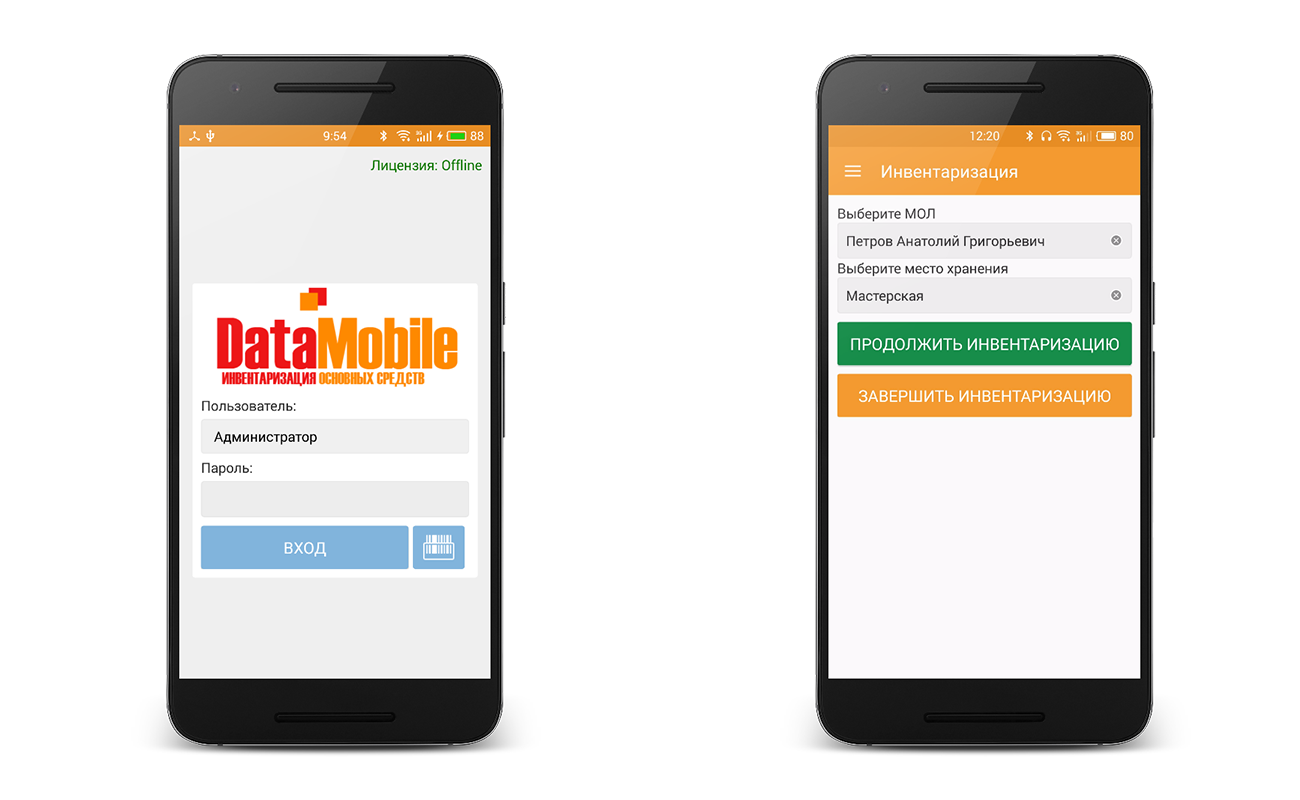
The software provides an additional RFID module, with which you can add the ability to connect an RFID reader , and then the inventory can be carried out at a distance by reading RF tags from fixed assets. And also there is a functionality for searching for a specific OS and writing labels to the OS card. But in our case, such a task was not expected.
Automation of accounting by barcodes always begins with marking. We recommended the TSC TX200 label printer . The printer is designed for thermal transfer printing, which is important for inventory purposes, because labels must be printed well and retain their characteristics for a long time, not fade or wear out.
To automate the marking process, we used processing for 1C, which allowed:
• uploading data to the TSD (MOLy, premises, OS)
• creating labels for printing
• loading data from the TSD, creating inventory documents at the same time
• automatically make transfers and write-offs if necessary
Below is an example such processing and label layout:


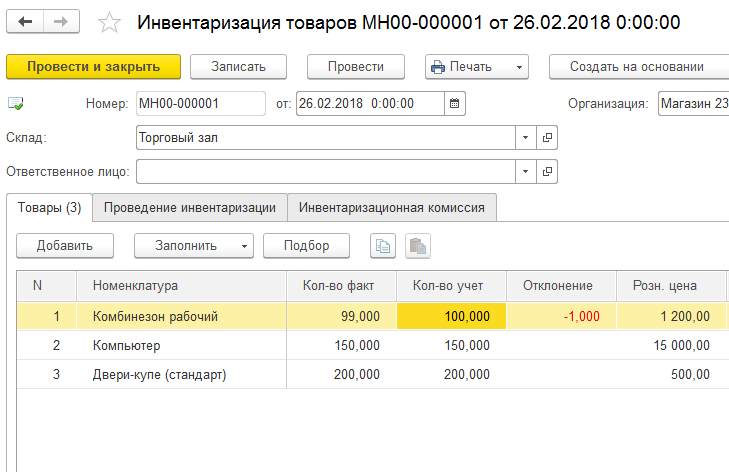
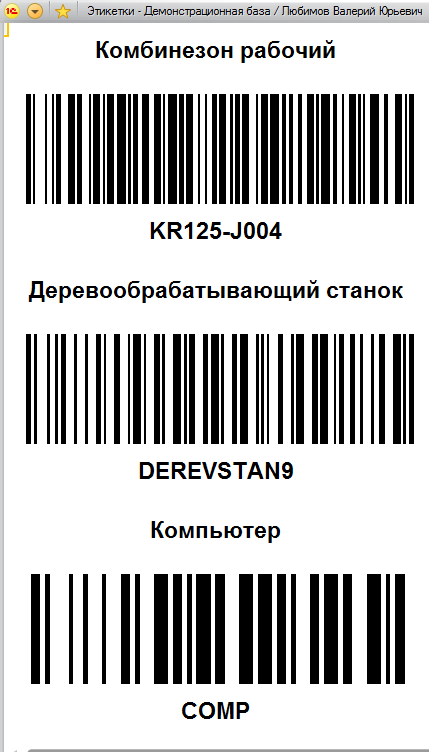
Even a telephone with DataMobile software could be used to read barcodes , but there was a question of efficiency, nevertheless, the amount of work was not small and nobody wanted to scan before the second advent. Without hesitation, we decided to purchase a mobile data collection terminal . TSD scans barcodes incomparably faster and is intended for corporate use. The device was selected budget and fresh - then it just appeared on the market - Honeywell EDA50 . Despite the low price, its filling allows you to quickly and easily process a large amount of information. EDA50 TSD runs on Android OS, has a large touch screen and rugged housing.
In the office of the radio station there is no single WiFi network, there are various remote rooms, soundproof studios, etc. However, this is not a problem for our software; it does not require a WiFi network everywhere. TSD loads data into itself and performs an inventory, and upon subsequent connection to a network or PC, it unloads them. Everything is simple and convenient.
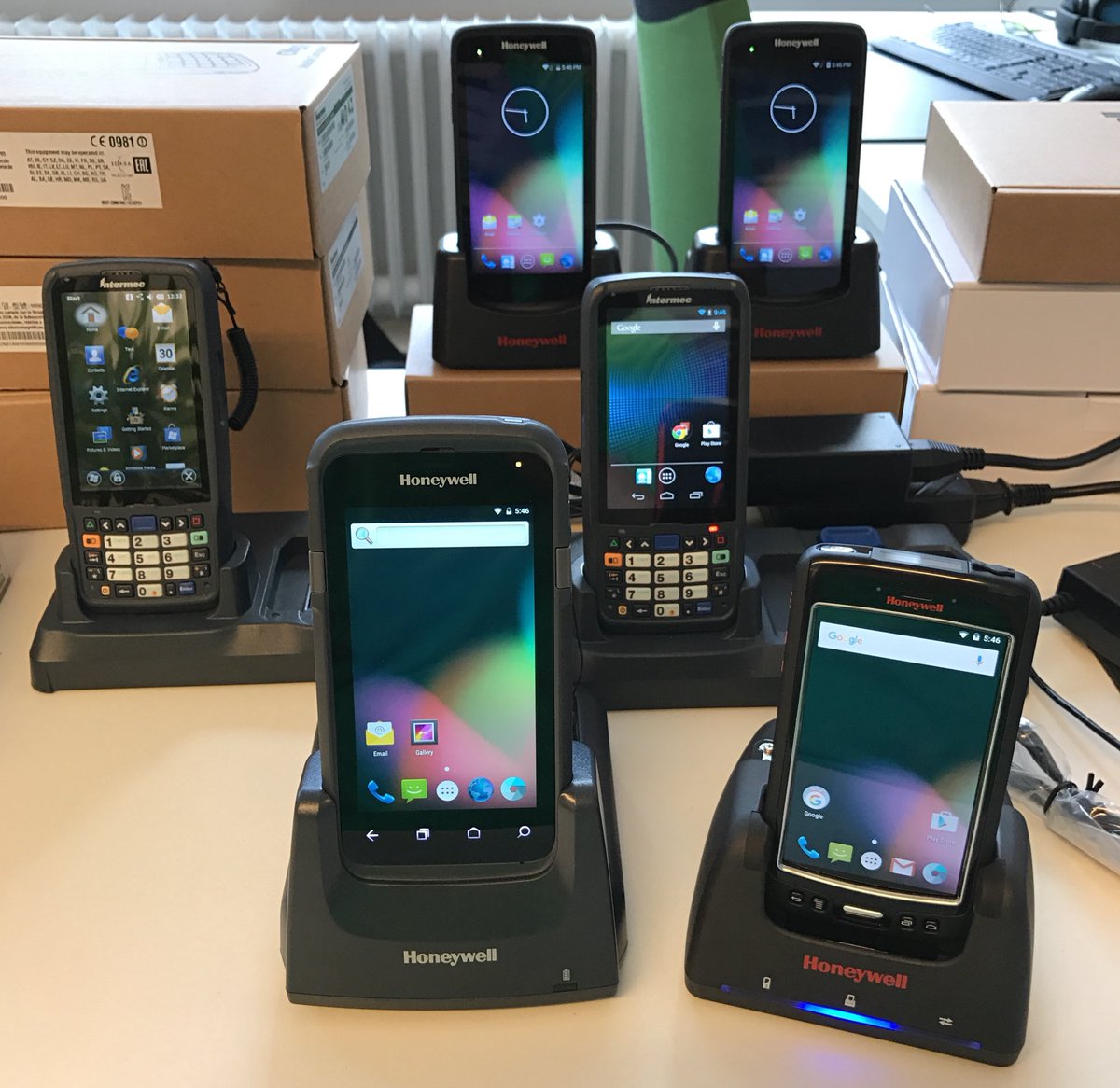
The customer purchased the necessary equipment and software license, put our processing for 1C, marked the property. Dealing with DataMobile Invent was easy for the guys. The software is intuitive for the user and ready to work, all instructions are available, integration into basic configurations takes a matter of minutes. For additional questions, we have an online help-desk . In a word, everything went like clockwork.
But about a month later, their IT specialist contacted us and said that the radios bookkeeping had new “Wishlist”. The company has registered low value fixed assets (computer mice, keyboards, etc.). Usually, they are already labeled with factory barcodes, and how to get them into the outline of the inventory process with DataMobile Invent was not entirely clear. Malotsenka is taken into account in a completely different way, it has its own barcodes, involves entering the quantity (and this is the specifics of commodity accounting), in the accounting department completely different accounting documents are assumed for it.

It was necessary to adapt the exchange processing from 1s to mark the "low value" and load the result into a regular inventory document. It was also required that the program understand such positions and handle it differently. Our developers quickly implemented this refinement in the base program.
A refinement was implemented in the software package, in which operating systems with certain attributes (for example, “low value”) were distributed according to separate directories. When a document for recalculation was uploaded to the TSD , the revision in the DataMobile Invent software made it possible to understand that if it is an object with the “low pricing” attribute, then entering the quantity for this item is available. If the item was from the list of regular OSs, then entering the quantity in the mobile application remained inactive.
After the inventory, when uploading the results to 1C, revision by 1C automatically distributed everything according to the relevant documents in accordance with the type of OS:
Within a week, with the help of DataMobile Invent, the client was able to start working with "low-value" OS. The whole inventory of goods and materials has become possible to maintain centrally using one program, and upload the result to the necessary accounting documents. Just magic!
As a result, the customer received a means of operational accounting of fixed assets, including low value ones, using a single software tool. The deadline for launching a fully automated inventory process from scratch, taking into account all the necessary improvements for the needs of the client, is 1 month.
How convenient this is for the company, and what the customer says, look in the video about the project:

Prologue
You may or may not love Chanson Radio, a matter of taste. But for us this is now not just a radio, but a successfully implemented project for the inventory of fixed assets.
A radio station is not a desk with a microphone, but a full-fledged working office of the organization with a mass of fixed assets on the balance sheet, including furniture, expensive equipment, and a whole bunch of stuff. The company’s accounting department was desperate to receive accounting data accurately and on time, because there’s already about a thousand units running around “stuff” in the office, try to count and figure out what is on paper. <

The inventory was carried out for several days, and then partially. Sometimes they started, but never finished (the guys are creative, without a muse). In a word, musical bookkeeping is tired of living like this and posed the question of automation edge-on.

Scene One: "TK"
And in general, there was no TK. There was a task to automate OS accounting, the guys got in touch with us, looked at the description of our software products on the data-mobile.ru website , phoned, talked. A couple of letters was enough to understand that our DataMobile Invent product was suitable for them, and we won’t invent a bicycle.
The standard functionality of DataMobile OS Inventory is:
• Carrying out an inventory of fixed assets
• Adding a photograph of the OS
• Record the marriage, indicating the reason
• Assigning a financially responsible person (MOT) and premises / storage locations
• Viewing the plan-fact of the inventory in real time, with the designation color of active positions
• Creating and sending print labels

The software provides an additional RFID module, with which you can add the ability to connect an RFID reader , and then the inventory can be carried out at a distance by reading RF tags from fixed assets. And also there is a functionality for searching for a specific OS and writing labels to the OS card. But in our case, such a task was not expected.
Scene two: “Marking of fixed assets from 1C”
Automation of accounting by barcodes always begins with marking. We recommended the TSC TX200 label printer . The printer is designed for thermal transfer printing, which is important for inventory purposes, because labels must be printed well and retain their characteristics for a long time, not fade or wear out.
To automate the marking process, we used processing for 1C, which allowed:
• uploading data to the TSD (MOLy, premises, OS)
• creating labels for printing
• loading data from the TSD, creating inventory documents at the same time
• automatically make transfers and write-offs if necessary
Below is an example such processing and label layout:




Scene Three: “Mobile Inventory Device”
Even a telephone with DataMobile software could be used to read barcodes , but there was a question of efficiency, nevertheless, the amount of work was not small and nobody wanted to scan before the second advent. Without hesitation, we decided to purchase a mobile data collection terminal . TSD scans barcodes incomparably faster and is intended for corporate use. The device was selected budget and fresh - then it just appeared on the market - Honeywell EDA50 . Despite the low price, its filling allows you to quickly and easily process a large amount of information. EDA50 TSD runs on Android OS, has a large touch screen and rugged housing.
In the office of the radio station there is no single WiFi network, there are various remote rooms, soundproof studios, etc. However, this is not a problem for our software; it does not require a WiFi network everywhere. TSD loads data into itself and performs an inventory, and upon subsequent connection to a network or PC, it unloads them. Everything is simple and convenient.

Scene four, typical: “We remembered here that we had forgotten”
The customer purchased the necessary equipment and software license, put our processing for 1C, marked the property. Dealing with DataMobile Invent was easy for the guys. The software is intuitive for the user and ready to work, all instructions are available, integration into basic configurations takes a matter of minutes. For additional questions, we have an online help-desk . In a word, everything went like clockwork.
But about a month later, their IT specialist contacted us and said that the radios bookkeeping had new “Wishlist”. The company has registered low value fixed assets (computer mice, keyboards, etc.). Usually, they are already labeled with factory barcodes, and how to get them into the outline of the inventory process with DataMobile Invent was not entirely clear. Malotsenka is taken into account in a completely different way, it has its own barcodes, involves entering the quantity (and this is the specifics of commodity accounting), in the accounting department completely different accounting documents are assumed for it.

Scene Five: “Any whim for your money”
It was necessary to adapt the exchange processing from 1s to mark the "low value" and load the result into a regular inventory document. It was also required that the program understand such positions and handle it differently. Our developers quickly implemented this refinement in the base program.
A refinement was implemented in the software package, in which operating systems with certain attributes (for example, “low value”) were distributed according to separate directories. When a document for recalculation was uploaded to the TSD , the revision in the DataMobile Invent software made it possible to understand that if it is an object with the “low pricing” attribute, then entering the quantity for this item is available. If the item was from the list of regular OSs, then entering the quantity in the mobile application remained inactive.
After the inventory, when uploading the results to 1C, revision by 1C automatically distributed everything according to the relevant documents in accordance with the type of OS:
- filling out different documents of inventory sheets by OS type
- documents moving or writing off, depending on the type of OS
Within a week, with the help of DataMobile Invent, the client was able to start working with "low-value" OS. The whole inventory of goods and materials has become possible to maintain centrally using one program, and upload the result to the necessary accounting documents. Just magic!
Epilogue
As a result, the customer received a means of operational accounting of fixed assets, including low value ones, using a single software tool. The deadline for launching a fully automated inventory process from scratch, taking into account all the necessary improvements for the needs of the client, is 1 month.
How convenient this is for the company, and what the customer says, look in the video about the project:
Only registered users can participate in the survey. Please come in.
How is the OS inventory process implemented in your company?
- 23% The process is automated using mobile devices 3
- 61.5% The process is not automated, we carry out manually on paper sheets 8
- 15.3% Do not spend at all, no need 2
